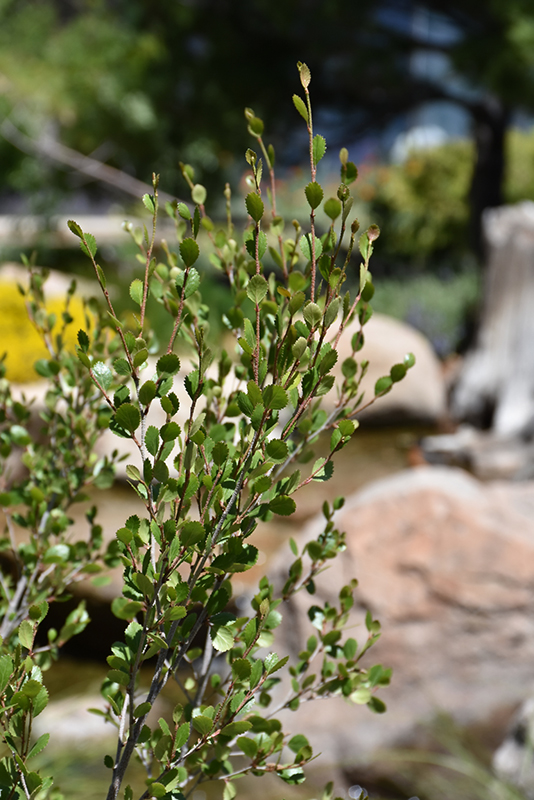Plant Finder
Height: 10 feet
Spread: 10 feet
Sunlight:
![]()
![]()
Hardiness Zone: 2
Other Names: Shrub Birch, Resin Birch, Ground Birch, Bog Birch
Description:
A naturally dwarf birch with a compact, rounded habit and fine-textured, glossy foliage; very hardy and adaptable, and does well in wet sites; a good utility shrub for garden detail, and may be shaped into a small tree; impressive in groupings
Ornamental Features
American Dwarf Birch has attractive dark green foliage with grayish green undersides on a plant with a round habit of growth. The serrated round leaves are highly ornamental but do not develop any appreciable fall color. It features subtle chartreuse catkins with red overtones along the branches from early to mid spring before the leaves.
Landscape Attributes
American Dwarf Birch is a multi-stemmed deciduous shrub with a more or less rounded form. Its relatively fine texture sets it apart from other landscape plants with less refined foliage.
This is a relatively low maintenance shrub, and should only be pruned in summer after the leaves have fully developed, as it may 'bleed' sap if pruned in late winter or early spring. It has no significant negative characteristics.
American Dwarf Birch is recommended for the following landscape applications;
- Mass Planting
- Hedges/Screening
- General Garden Use
- Naturalizing And Woodland Gardens
Planting & Growing
American Dwarf Birch will grow to be about 10 feet tall at maturity, with a spread of 10 feet. It tends to fill out right to the ground and therefore doesn't necessarily require facer plants in front, and is suitable for planting under power lines. It grows at a slow rate, and under ideal conditions can be expected to live for 60 years or more.
This shrub does best in full sun to partial shade. It is quite adaptable, prefering to grow in average to wet conditions, and will even tolerate some standing water. This plant should not require much in the way of fertilizing once established, although it may appreciate a shot of general-purpose fertilizer from time to time early in the growing season. It is not particular as to soil type or pH. It is highly tolerant of urban pollution and will even thrive in inner city environments. This species is native to parts of North America.

